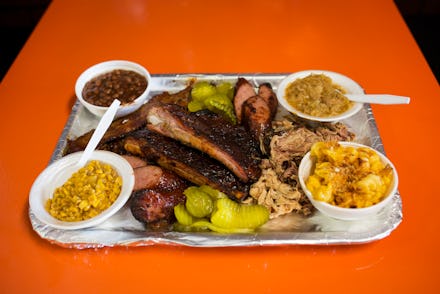12 of Your Favorite Foods That Contain GMOs

GMOs, or genetically modified organisms, comprise a large majority of the food much of the Western world consumes on a daily basis. GMOs are defined by the Non-GMO Project as "living organisms whose genetic material has been artificially manipulated in a laboratory through genetic engineering." Though genetically modifying crops has become a commonly used practice to expand agriculture and promote increased food production, the implications of their use in the human body and environment are still, for the most part, unknown.
There isn't an easy answer for Americans wondering whether their groceries contain GMOs. In September, the New York Times reported on the food industry's powerful lobbying ability to keep GMOs off labels, as well as modified crops continuing to expand across the nation. The U.S. government has repeatedly defended food packaging from having GMO labels tacked on, with the latest vote by a Senate committee to keep GMOs off labels set for Thursday.
"I just wish I knew what is and isn't a GMO product," Zoë Lillian, 25, previously told Mic. "I am not necessarily for or against them, although superweeds and superbugs are pretty terrifying. As a consumer, I feel most strongly about increased visibility."
Read more: What Are GMOs? Here's What You Need to Know About Genetically Modified Organisms
The practice has become a controversial and complex phenomena for several reasons. The use of genetically modified crops could eventually do away with the need for pesticides in food, provide rapid solutions for regions impacted by natural disasters and could even increase a crop's nutritional value. However, Harvard University's Center for Health and the Global Environment notes there still confounding variables which can have negative effects on society.
While "pharma crops" made up of corn are sprouting up throughout the United States helping medicine manufacturers create an expanded supply for drugs, recent mistakes have caused those crops to be mixed with other corn crops meant for human consumption. These "pharma crops" could make it difficult to treat a person or animal with antibiotics if consumed, among a variety of other potentially disastrous implications, according to the Harvard School of Public Health.
Below are some of the most commonly modified foods provided by Global Healing Center, for those interested in knowing where GMOs are found as the fate of this practice continues to unfold.
Read more: Here's What's Really in the Popular Vitamins and Supplements Everyone's Taking